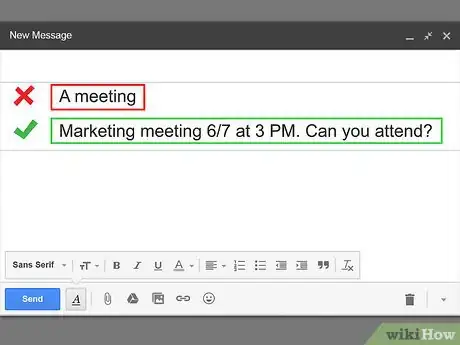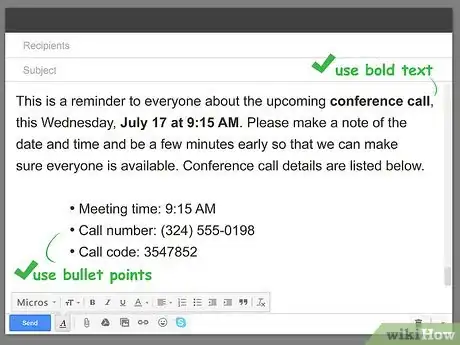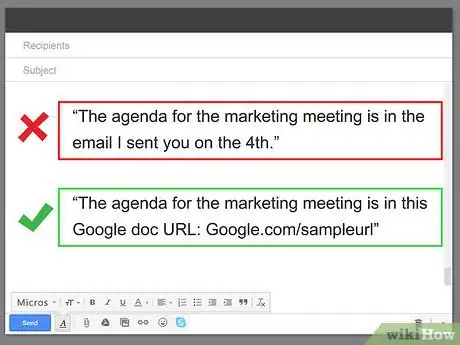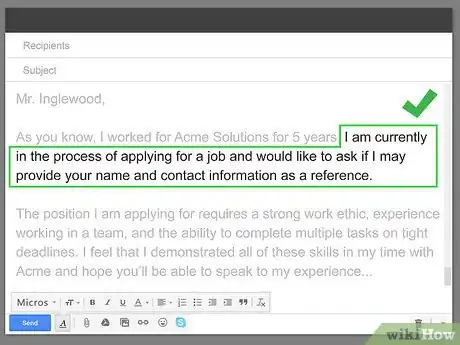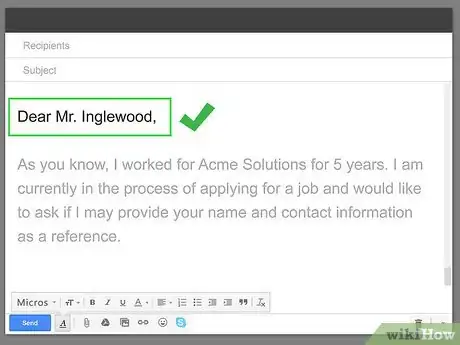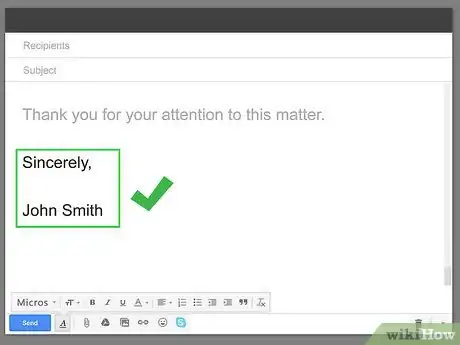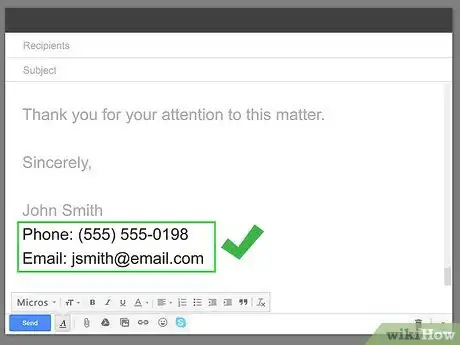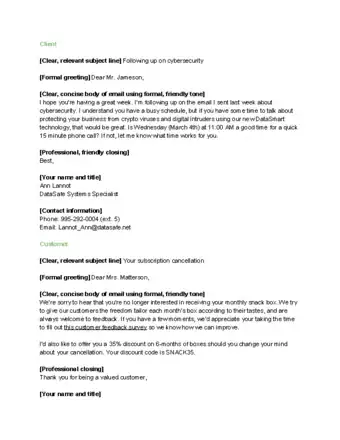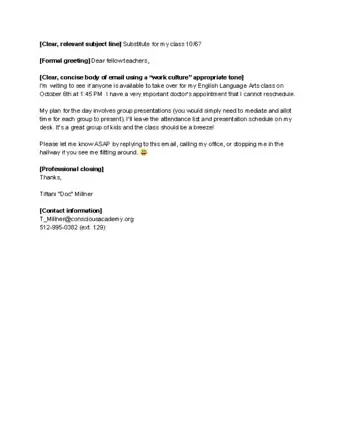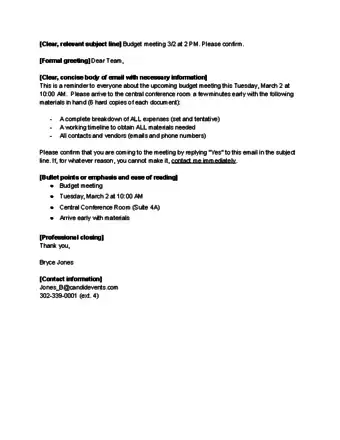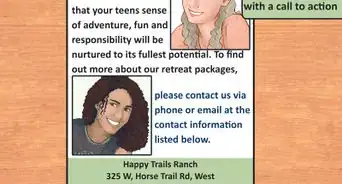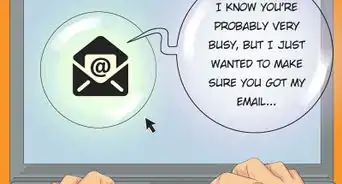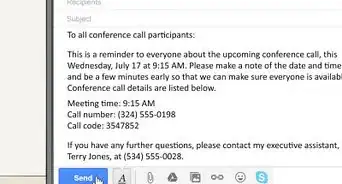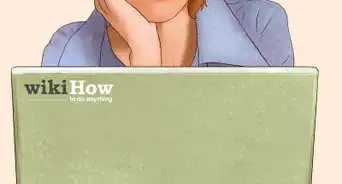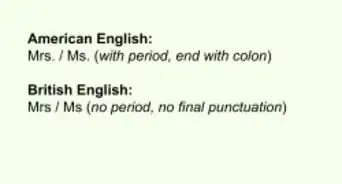This article was co-authored by Tami Claytor. Tami Claytor is an Etiquette Coach, Image Consultant, and the Owner of Always Appropriate Image and Etiquette Consulting in New York, New York. With over 20 years of experience, Tami specializes in teaching etiquette classes to individuals, students, companies, and community organizations. Tami has spent decades studying cultures through her extensive travels across five continents and has created cultural diversity workshops to promote social justice and cross-cultural awareness. She holds a BA in Economics with a concentration in International Relations from Clark University. Tami studied at the Ophelia DeVore School of Charm and the Fashion Institute of Technology, where she earned her Image Consultant Certification.
There are 9 references cited in this article, which can be found at the bottom of the page.
wikiHow marks an article as reader-approved once it receives enough positive feedback. This article received 13 testimonials and 89% of readers who voted found it helpful, earning it our reader-approved status.
This article has been viewed 504,323 times.
Email overload! Many people in business get more emails than they can deal with. To make sure your business emails are well received you need to make them clear, concise and actionable. In addition, using the appropriate format and knowing what to include in or exclude from a business email can help you and your company build and maintain a professional presence.
Steps
Making a Clear, Concise and Actionable Message
-
1Summarize the email in a 6-8 word subject. It is important to make sure you include a subject, since an email that does not have a subject may be ignored. Your subject should be short and to the point and it should highlight the main message of the email. The ideal subject gives the reader all they need to know or informs them they need to make a decision. People who receive hundreds of emails a day may only open emails with particularly compelling subjects. Make sure to place the most important words in the subject first because the entire subject may not be visible on a mobile device. Ideal subjects are 6-8 words and personalized to the recipient.[1]
-
Examples of good email subject lines
- Marketing meeting 6/7 at 3 PM. Can you attend?
- The printer broke. Can I replace for $200?
- Your PetsAlive.org shipment will arrive on 9/8
-
Examples of bad email subject lines
- A meeting
- A printer
- On the way to you
-
Examples of good email subject lines
-
2Make emails concise. People are busy, and they do not want to spend much time reading work emails. Make your emails as short as they can be while still providing all the details necessary.[2] Your sentences should be short and to the point.
- Before sending your email, read over it and eliminate any irrelevant information. Generally, if you have provided excess or off-topic information, delete it.
- Some people try to create and send emails containing five sentences or less. If you can do this, it is a good guideline for keeping an e-mail brief and to the point. You can do this by answering the questions, “Who am I? What do I want? Why am I asking this person? Why should they do what I am asking? What is the next step that I/they/we will need to take?” However, this applies to the average e-mail, not an e-mail that demands a lot of detail, or a quick "thank you" to your co-worker who sent you that link.[3]
Advertisement -
3Write the email so that it can be skimmed and acted on. Use formatting that will help your reader get quickly to information they need.[4] Bold the most important sentences or concepts in a long email.
- Use bullet points and bold text to help make the email easier to skim and act on.
-
4Include URLs or attachments if that will help the reader process the email faster. Never force the reader to hunt for a URL or attachment in another email. Check to see if the file is attached before sending the email.
-
Example of good URL implementation
- "The agenda for the marketing meeting is in this Google doc URL: Google.com/sample"
-
Example of a bad URL implementation
- "The agenda for the marketing meeting is in the email I sent you on the 4th."
-
Example of good URL implementation
-
5Ask clearly for the action you want the reader to take. Do not make the reader guess that you are asking for a decision, or advice, a referral, or a purchase. Ask for directly and unequivocally for what it is that you want, need or expect!
- Asking clearly is especially important if you are sending to multiple people. And, make sure to call out the name of the specific person you need to make the decision. For example: "Elizabeth: Would you prefer I go down path A or path B here?"
- Alternatively, if your email is only informing someone of something rather than asking for an action, clearly label the email as "FYI" in the subject or in first sentence.
Maintaining Formality and Professional Image
-
1Use a formal tone. The tone of your email should remain professional and straightforward. Strive for a confident and courteous tone.[5] Try to leave emotional or informal language out of the email entirely. Avoid contractions and abbreviations whenever possible. Remember, full-length phrases often seem more formal.
- For example, the following email is too informal for business: Thanks for the snakes you sent. I’m sorry to say that two were dead. Send more soon, plz. Talk to ya later!
- A more formal version of the previous email: Thank you for your shipment of the four ball pythons to our store, Pets Alive! on March 2, 2015. Unfortunately, two of the snakes appear to have been hurt during the delivery and were deceased when I opened the snake crate. I would like for you to send two replacement snakes as soon as possible. Please email me or call the store with further questions or to make arrangements for a new shipment.
- Sometimes a more informal e-mail is appropriate "in house" with co-workers you know well and if it is in line with "work culture". However, do not use text abbreviations, use complete sentences, and do not write anything that you would not want your boss to read.
-
2Proofread your email. Do your best to ensure that your email does not include grammar or spelling mistakes and uses standard punctuation - no ALL CAPS, for example.[6] Many email programs include a spell check option; if your email has one, use it! Poor grammar almost certainly will undermine the message that you are sending, so, if possible use an grammar checker.
- If you are sending an email to a large number of people or if the email is particularly important, you may want to have someone (or several individuals) proofread it before you send it.
Best Practices for Formal Greetings and Closings
Depending on your relationship with the recipient, you may want use formal openings and closings. The following provide some direction and an array of choices.
-
1Begin your email with a greeting. The greeting should be concise and formal. You may or may not choose to address a person specifically by name, depending on the context of the message. A message to another business or to an unspecified person does not require a name.[7]
- Some examples of greetings are:
- Good afternoon,
- Greetings,
- Dear Dr. Smith,
- Mrs. Campbell,
- Some examples of greetings are:
-
2End the email with a closing. An appropriate closing is polite and signals that the email has come to an end. While the closing of an email may not bear a common letter closing such as “Best Wishes” or “Sincerely,” it is considered a "best practice" to provide a closing to your email.
- Some potential closings:[8]
- I look forward to your response,
- I hope to hear from you soon,
- Thank you for your time,
- My best to you,
- Thanks for your consideration,
- You may end your Pets Alive! email to the snake distributor by saying, “Thank you for your attention to this matter.”
- Some potential closings:[8]
-
3Sign your name. It is appropriate to write your name at the end of an email. Many email programs allow you to provide an automatic signature that is customized to your liking. Be sure that the formality of your response matches the details of the email. You may want to provide your full name and title in a work email to another business or to someone you have not met, while your first name alone may be appropriate in an email to a coworker you see every day.[9]
- Some signature options are:
- Dr. Jane Smith (most formal)
- Dr. Smith (slightly less formal)
- Jane Smith (somewhat informal)
- Jane (informal)
- Some signature options are:
-
4Consider providing contact information beneath your signature. Depending upon the details of the email, you may want to provide contact information such as your phone number, fax number, address, or website. If this is information that you wish to include in most or all of your emails, it can be built in to your customized email signature.
Sample Annotated Emails
References
- ↑ https://www.cnbc.com/2017/08/23/how-to-write-write-the-perfect-email-subject-line.html
- ↑ https://writingcenter.unc.edu/tips-and-tools/conciseness-handout/
- ↑ http://www.entrepreneur.com/article/226581
- ↑ https://www.fsb.miamioh.edu/fsb/content/programs/howe-writing-initiative/HWI-handout-bulletpoints.html
- ↑ https://owl.purdue.edu/owl/subject_specific_writing/professional_technical_writing/tone_in_business_writing.html
- ↑ https://www.menlo.edu/wp-content/uploads/2015/03/writing-a-formal-email.pdf
- ↑ https://owl.purdue.edu/owl/general_writing/academic_writing/email_etiquette.html
- ↑ https://www.forbes.com/sites/susanadams/2013/09/27/57-ways-to-sign-off-on-an-email/
- ↑ https://writingcenter.unc.edu/tips-and-tools/effective-e-mail-communication/
About This Article
To write a business email, make sure you include a 6-8 word subject line that highlights the main message of your email. Then, start your email with a formal greeting, like "Dear Dr. Smith" or "Good afternoon." In the body of your email, maintain a formal, courteous tone, avoiding abbreviations and contractions as much as possible. Also, try to keep your email brief since people are often busy and may not want to read a long email. Finally, end your email with a formal closing, like "Thank you for your time" or "I hope to hear from you soon," and include your name and contact information. To learn how to include URLs and attachments in a business email, scroll down!
